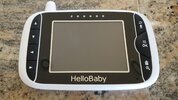I can tell you other teamsters have this. So they’ve not had a problem with it before.
Interesting.
So, let's see here....
Nat'l Master , Art 18, sec 8 & 8.1
Radios and Distracted driving.
Allowances for Radios, with sec 8.1 discussing headsets, blue-tooth, and earphone devices.
Use this as established allowances of the usage of technology.
Check your local and state laws for any deviations contrary.
So far, in pkg, Radios and there respective sec 8.1 definitions, have been allowed.
Of course, we must follow this language.
Its up to the employee to follow these rules as best as possible.
Feeder :
As far as I've seen, headsets and CB (2-way radios) have been negotiated and allowed.
Again, following language rules. Mule drivers , as well.
GPS, Geo-fencing, IVIS, etc... have all been in use for years.
To me, this sets the precedent.
If we are allowed certain written uses, and I have really not seen much to any discipline over it,
we should be able to prove over time discipline should not increase and should stay within current percentages of supervision oversite.
The company so far has shown its uses of technology, and should stay consistent with its prior standings of conduct, et al.
If then, after these installations, any spike or increase in talk with's, discipline, or anything combined leading to any escalation of supervision oversite should be grieved immediately.
The company, up to this pointe, again has allowed for the existence of some parts of technology.
They should be forced to similar standards, & continue non discipline for future technology.


 Were getting them here at Fedex also. If this is legally challenged, I dont know how this will hold up. UPS/Fedex may have a right to record our likeness, speech, and on the job activity and store it. But I do not think a third-party has that right. And both UPS and Fedex are using third-party companies.
Were getting them here at Fedex also. If this is legally challenged, I dont know how this will hold up. UPS/Fedex may have a right to record our likeness, speech, and on the job activity and store it. But I do not think a third-party has that right. And both UPS and Fedex are using third-party companies.